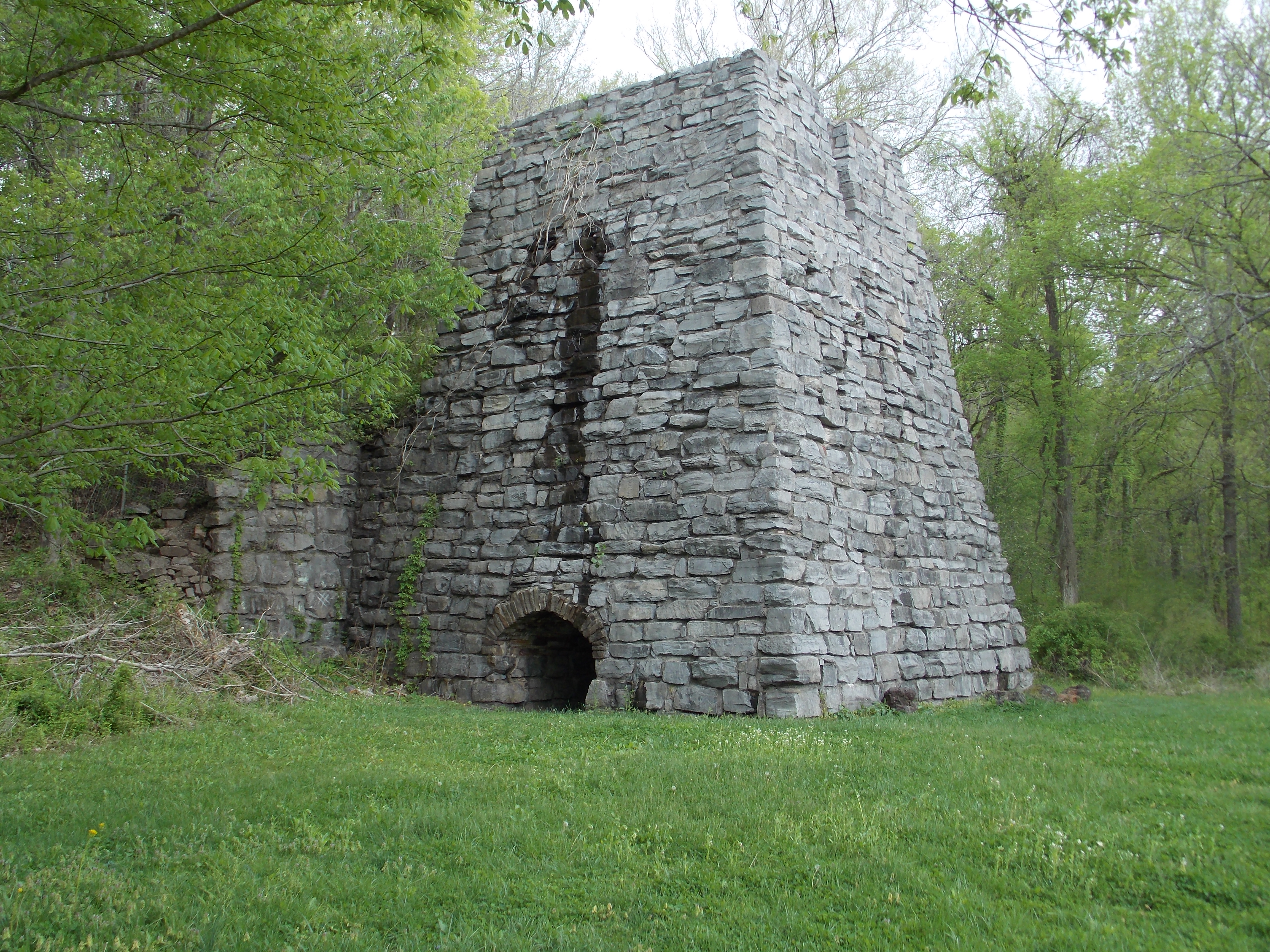Illinois Iron Furnace, a one of a kind history in the Shawnee National Forest – picture by Rose Hammitt

Last year I came close to seeing the iron furnace, but no cigar! The road to the furnace looked like it was running out of pavement and there was a big dip that we would have to cross, Rose Hammitt, my travel buddy and I chickened out and never made it that trip south. This year though we had the opportunity to attend a tour for travel writers and the Illinois Iron Furnace was on the agenda. On our bumpy ride there Todd Carr, our tour guide and member of the Hardin County Main Street (along with Carol Hoffman of the Southernmost Illinois Tourism Bureau) assured us that we were taking Furnace Road, the back way and that the “other” road was much better.
Once we arrived at the furnace, I was amazed by the size of this pyramid shaped icon that once was a thriving business where an entire town sprung up. Todd Carr wrote, that around 1844, “A hundred or more families now lived in the area of the furnace and a post office in the name of Illinois Furnace; Illinois was opened November 2, 1846, in the company store with Chalon Guard (gentleman that Gen. White sold his interest to) as postmaster…”
The Illinois Iron Furnace is the only remaining iron furnace structure in the state of Illinois and is located in the Shawnee National Forest. News about the iron ore deposits in the area were reported by a traveling correspondent in a letter on May 16, 1839 which was later printed in the Springfield, Illinois paper, the Sangamo Journal. “Large deposits of iron ore of the richest character have been discovered in Pope County, in the vicinity of the Ohio river. T. Gurard Esq. And Gen. L. White, of Equality, is now erecting a furnace for the manufacture of pig iron. The amount of ore is said to be immense and the conveniences for erecting iron works no where exceeded.”
The news of the iron ore deposits started a viable industry that survived on and off until 1880. Iron ore, a mineral block found underground created a viable industry for years after White and Gurard built the furnace. Iron ore is the most common mineral used to make tools and armor and after it is mined requires the smelting process for iron ingots or in this case, pig iron to be formed.
The Forest Service report said the Illinois Iron Furnace shut down in 1861 which is surprising because there was a need for iron during the Civil War, but the lack of men to work at the furnace may have been why attempts to smelt iron during and after the War were futile. The furnace appears to have been in operation sporadically between 1872 and 1879, and then the Forest Service reports that “In August 1880, the Illinois Iron Furnace was “blown in” and manufacturing continued through 1887. The furnace was partially destroyed in the 1930’s to supply rock rubble for the embankments of the Hog Thief Creek Bridge built by the CCC Conservation Corps.”
The furnace was partially destroyed in the 1930’s to supply rock rubble for the embankments of the Hog Thief Creek Bridge built by the CCC Conservation Corps.”
Because some of the rock was used, the furnace could not be rebuilt completely. The current appearance of the Illinois Iron Furnace is due to a reconstruction in 1967. The reconstructed furnace core is solid, having been filled with rubble and concrete. It is hard to believe when looking at the remains of the furnace today that this was once a thriving community with a ground shaking, blasting furnace that was a major contributor to the local economy.
It is helpful to have a bit of history before heading out to the furnace because the placards explaining the history have been removed because of lack of funds. More are to be replaced sometime in the near future. I was vindicated by the amazing history of the furnace, Rose was impressed as well although she didn’t have the attachment to the site that I did! As fore mentioned, be aware that roads to the furnace are a bit sketchy, but the history makes this a great chance to see a one of a kind history in Illinois. Log onto http://www.theshawneenationalforest.com/home/recreation-areas/iron-furnace-recreation-area for more information.



